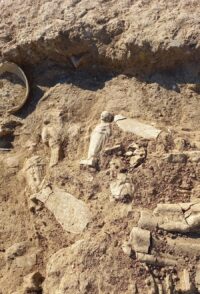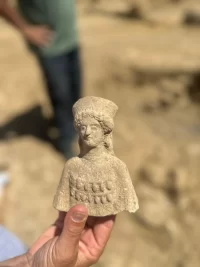
Founded as the Greek colony of Akragas, Agrigento was routed by the forces of Carthaginian general Himilko in 406 B.C. Agrigento’s residents fled to nearby Gela when Himilko sacked their city, but then he took Gela too. All of the Greek colonies on Sicily fell to Himilko and were made vassals of Carthage. Punic primacy would not last long, however. Timoleon of Corinth defeated Carthage in Sicily and liberated the Greek cities in 399 B.C.

There are at least 60 elements in the deposit, including terracotta statuettes of deities, female busts, protomes (decorative reliefs from buildings), oil lamps, small vases and fragments of bronze artifacts. They were mixed with large numbers of bones and buried in one room of the complex. Archaeologists believe the deposit was made after the Akragantines returned to the city. 
Archaeologists will continue to research the find, focusing on the complex stratigraphy connecting the deposit to the living layers and abandonment layers of the house. The recovered artifacts will be conserved and stabilized for eventual display.
* This article was originally published here






No comments:
Post a Comment